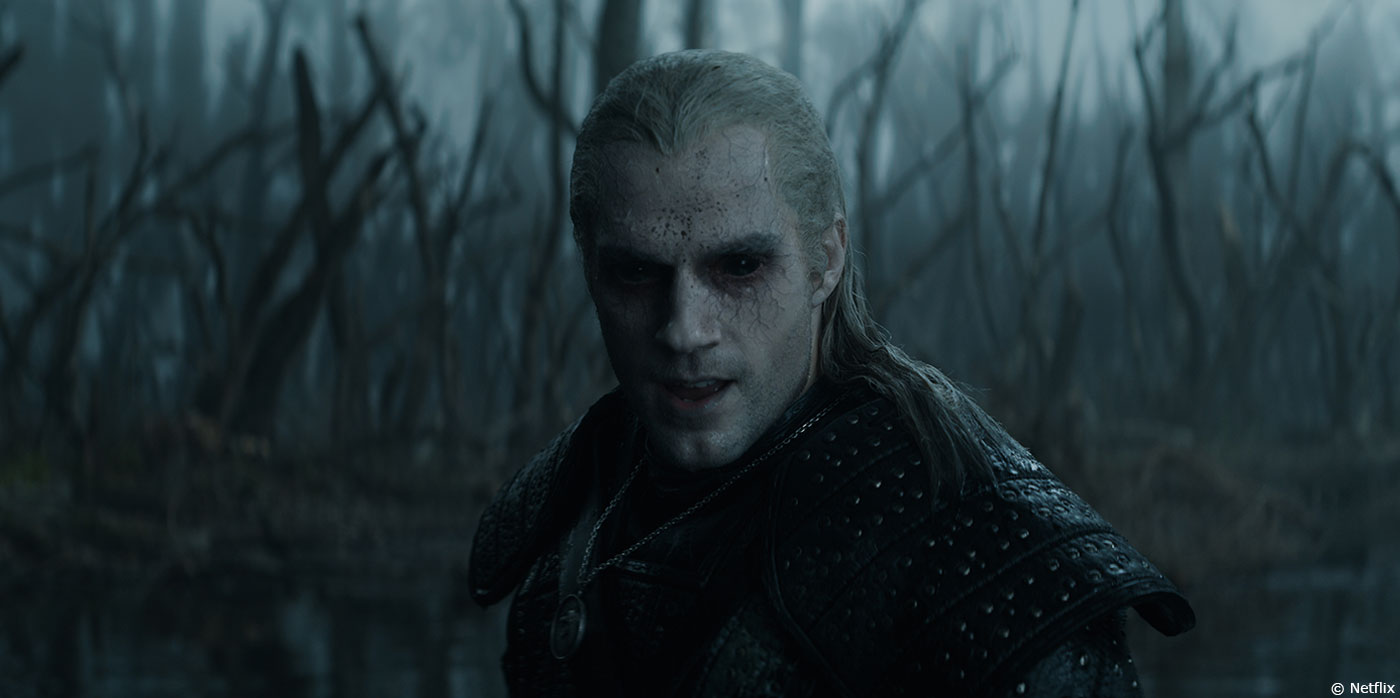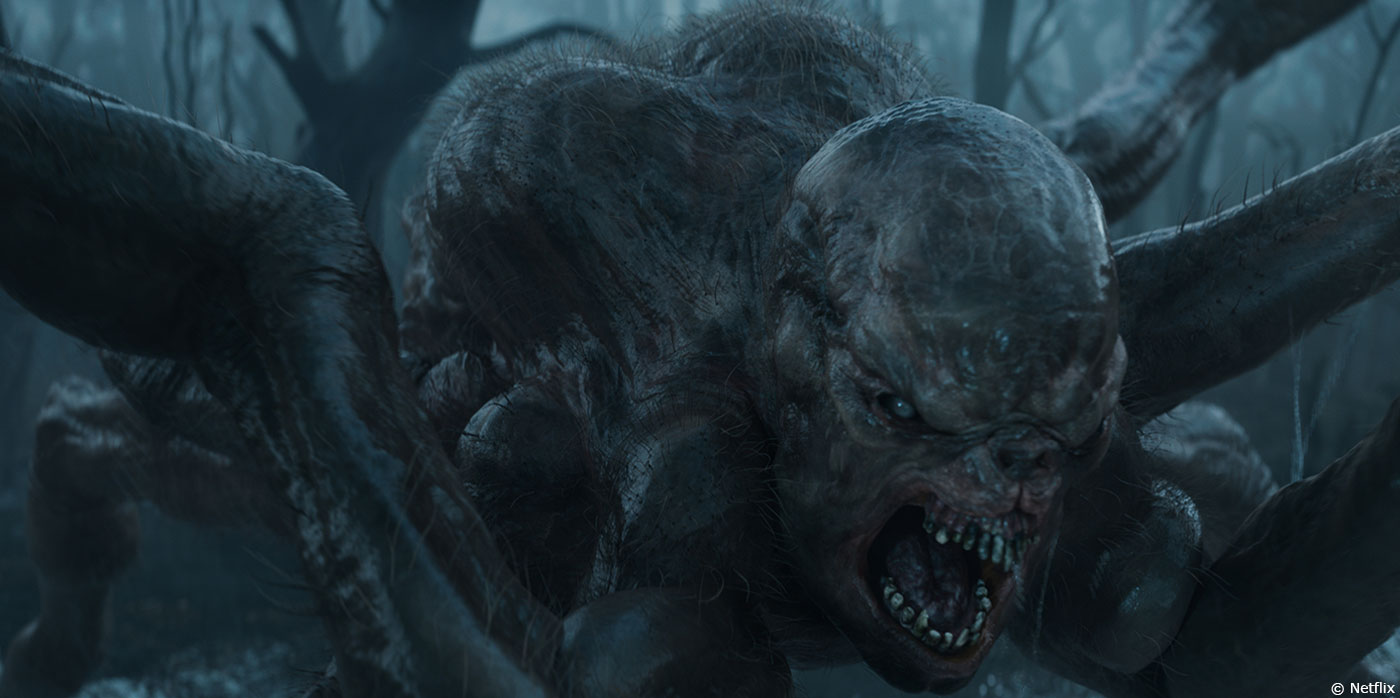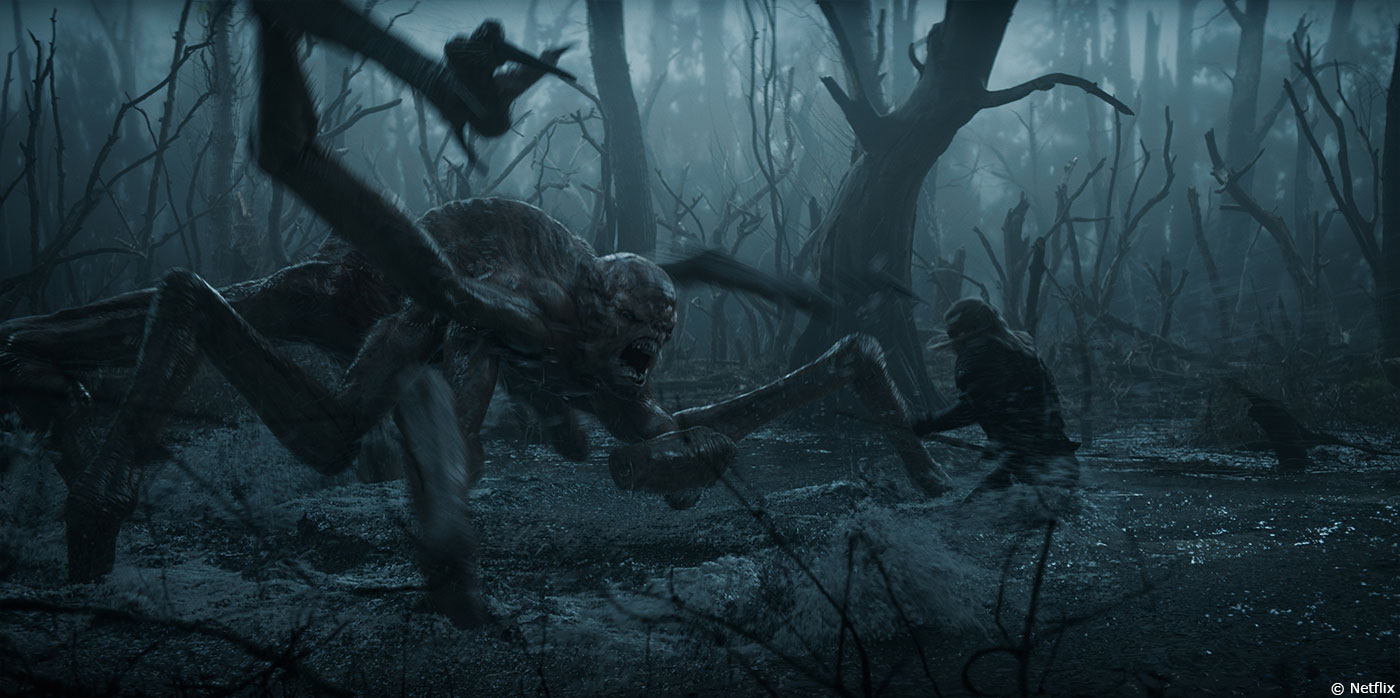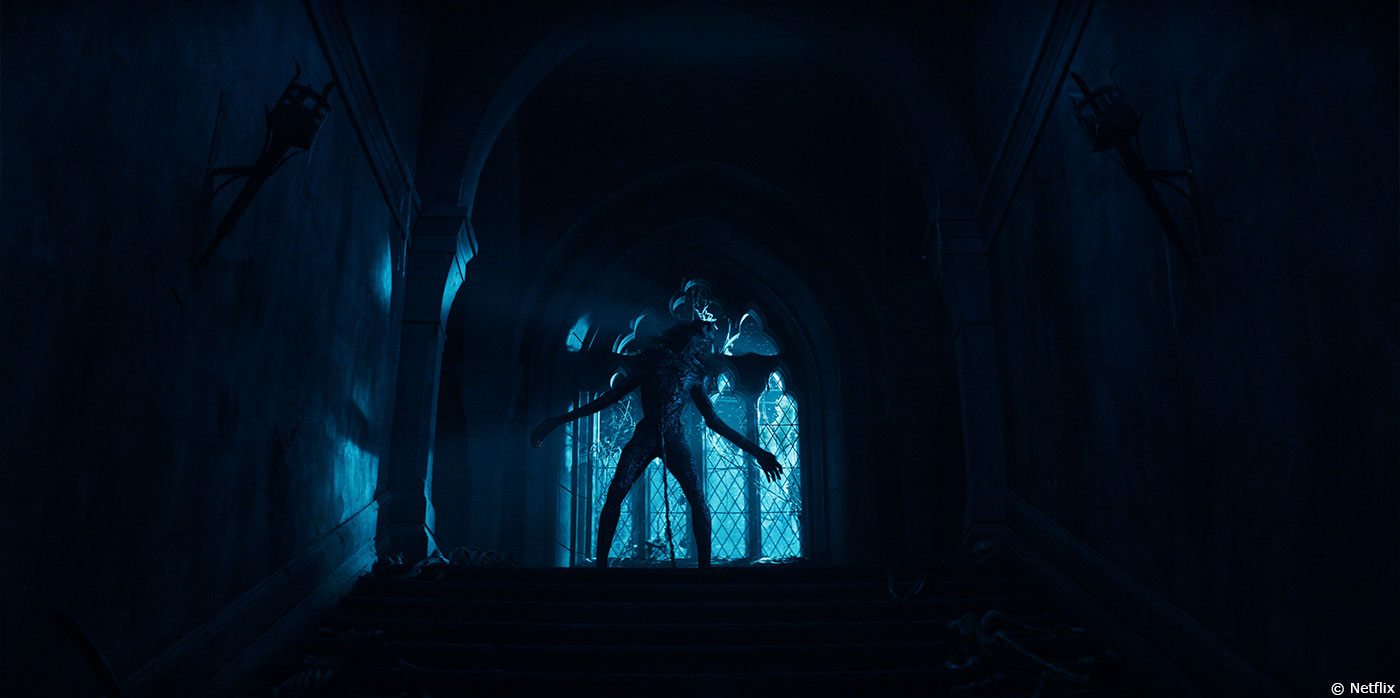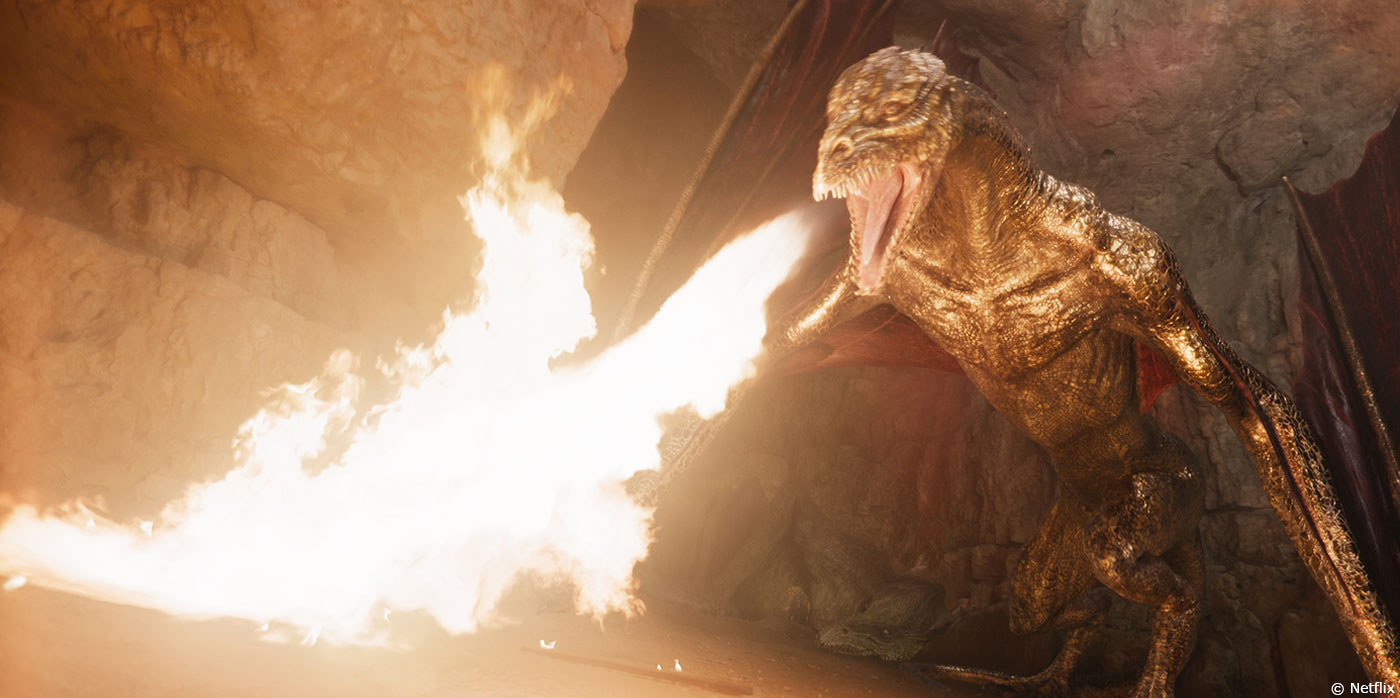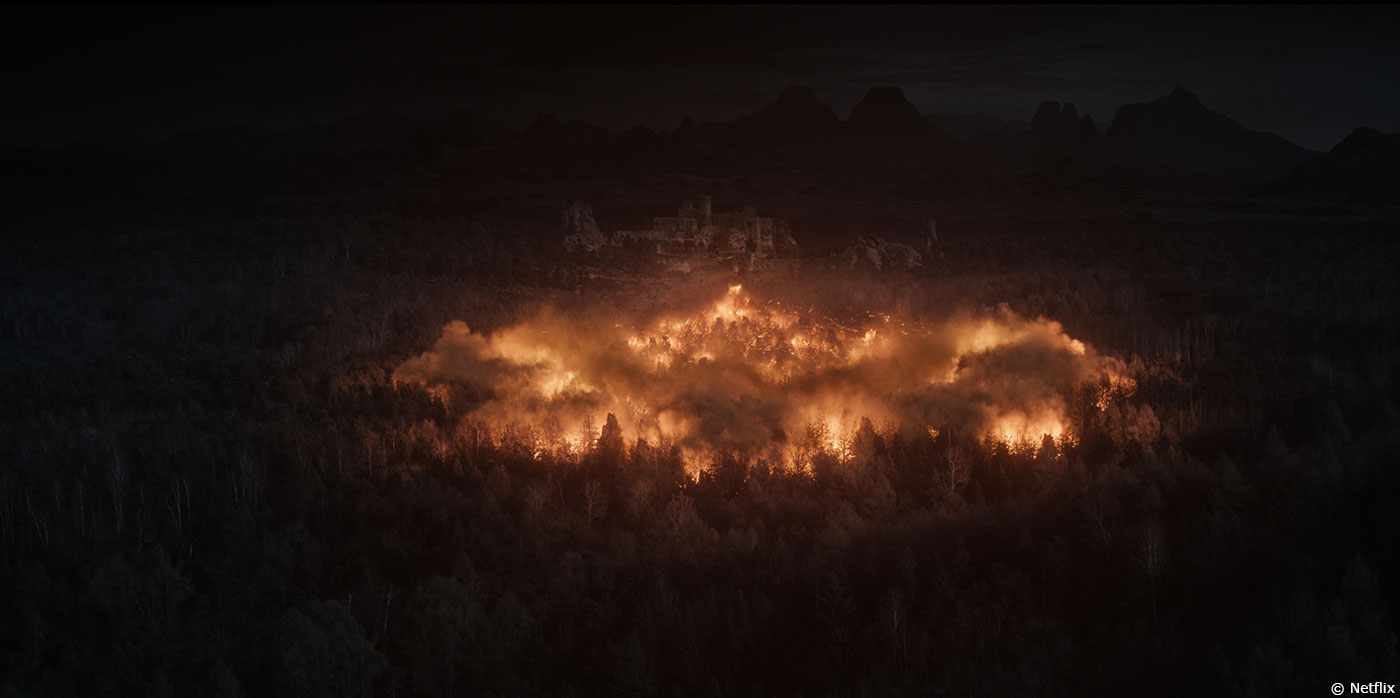In 2016, Aleksandar Pejic explained the work of Framestore on THE LEGEND OF TARZAN. He then joined Cinesite and worked on AVENGERS: INFINITY WAR and ROBIN HOOD.
How did you and Cinesite get involved on this show?
Production VFX Supervisor Julian Parry awarded work on THE WITCHER to Cinesite primarily based on our track record. However, we had also worked previously with VFX Producer Gavin Round on the film ADRIFT, and Cinesite has a great existing relationship with Netflix. Our award was focussed mainly on creatures, with some crowds and other visual effects and it stretched across all eight episodes in the series.
How did you organize the work at Cinesite?
Work was completed by Cinesite’s London studio. We first met up with Julian before filming began, when we started prepping, to discuss the sequences and our approach. Then I was on set whilst our shots were filmed, which was incredibly useful. As well as being able to give input at that crucial stage, it meant we established a working relationship early on, which was important for when we would be communicating remotely later.
How did the collaboration with the VFX supervisor / director work and what was the approach to the visual effects?
The production was meticulously planned before we became involved; by the time I arrived in Budapest the sets had already been built and the crew was ready to shoot. We worked closely with Julian, providing information not available on set which would affect the filming of the visual effects. We created motion tests as well as concept designs in relation to the set pieces which had been built, and this helped with understanding the limitations of the sequence itself in relation to the brief, the physical set and cost.
What reference was provided for the Kikimora?
One of the two creatures we created and probably the biggest challenge for us was the Kikimora, which features at the very start of episode one. The Kikimora is a legendary creature from Eastern European folk-lore, an amorphous kind of monster which in THE WITCHER appears like a horrifying spider with a humanoid torso and head. This fight sequence between the creature and Geralt (Henry Cavill) is set in a swamp in the middle of a dark, barren forest.
Early on, our main work involved look development for the guys on set; in particular, understanding the speed and scale of the creature, creating motion tests and thinking about how it would move through the swamp. We created various motion passes for different types of insects as we developed a sense of the Kikimora’s speed. The production provided previz and storyboards based on concept work, but once the set had been built changes were required which basically meant we started over.
How did you manage the fight choreography?
The stunt choreographer had plotted pre-planned moves, so our creature had to fit around those set pieces. We developed the Kikimora’s movement to fit with the action, planning the interactions between Geralt and the creature, although the animation could not be planned too much in advance, we needed to work with what had been filmed to get a real sense of connection during the fight. The action takes place in water, so it was important that we created a realistic sense of resistance whilst retaining the speed of the battle.
The swamp was created using Houdini. Although they filmed with water on set (an underwater tank on stage was used for some shots), it was fully replaced in most of the action shots, with the surface covered quite densely with leaf litter and forest debris. As well as retaining speed of movement through the water, we had to be careful not to create too much splash, which might obscure the action. Set extensions were also required. Although the majority of the swamp environment was built on stage, set extensions created scale and depth, which was particularly important for some angles and views. It’s a mysterious place, with dark, skeletal trees and a foggy, dreamlike atmosphere. The production provided HDRi and image references, and this, along with what had been shot on set, gave us plenty of information to drive explorations in Gaffer for our lighting rig set up.
Can you elaborates about the battle sequence with crowds?
We worked on battle sequences requiring crowds in episodes one, seven and eight. Filmed on a hillside outside Budapest, we were tasked with creating an army of 10,000 Nilfgaardian soldiers fighting the Cintrans. These were simulated using Atoms Crowd system, integrated to work in our pipeline; it was the first time we had used this crowd system and it worked well. 15-20 extras were filmed as reference and captured with 360-degree photogrammetry and motion capture cycles, as infantry and on horses, with a range of armour and uniform. This gave us scale, lighting, texture and movement reference; they were later replaced with our crowd agents and CG horses.
What about the design and creation of the Striga creature?
Our other creature was the Striga, which features in another fight with Geralt that takes place in an old gothic castle overlooking Wyzima, a sprawling industrial city in Temeria. The fight starts in the Great Hall before crashing down into the Crypt. The Striga is a horrible humanoid creature, which will be recognisable to fans of the book and computer game for her deadly fighting skills, speed and strength. A thin, haggard, zombie-like creature, she has leathery skin, long stringy hair and an umbilical cord hanging from her stomach.
The production built a prosthetic costume which was worn by the stunt crew and filmed for various action shots. However, it had its limitations and the elongated limbs were difficult for the stunt people to move in. Our work was split between augmenting and slimming down the prosthetic and creating some entirely CG creature shots. The approach for the 2D shots was to get a full rotomation of Striga to use as a shape guide for more traditional 2D warping methods. The team created two versions of the model: one which matched the prosthetic and one which had been manipulated with a slimmer look. This allowed them to UV project the plate onto the larger model in Nuke, and then transfer these textures to the slimmer model, giving a procedurally slimmed image. We were provided with a full cyberscan of the prosthetic, which was used to create the full CG Striga for shots which required more dynamic movement. We made some adjustments to the prosthetic which included extending the legs and arms, but needed to keep faithful to what was shot to ensure a seamless transition with the full CG version.
In all, 12 shots involving a fully CG Striga were created, in addition to several shots where we augmented the prosthetic. The face of the prosthetic was in some instances enhanced using a 2D approach and in other shots replaced with a fully CG face. During the fight, a blast leads Geralt and the Striga to fall through the floor of the Great Hall, down to the crypt below, where the battle continues. Houdini was used to create the destruction FX simulation, with dust and debris added.
What were the challenges in terms of modelling, lighting, rigging and animation?
Animation was the toughest challenge for the creatures. Also, we needed to deviate from what was shot in the plate, but not too much because the rest of the sequence still had the stunt guys wearing the prosthetic – the biggest challenge was in creating consistency between the CG and real, while retaining the style of the original choreography. We had to make it better, more believable.
Can you tell me more about the Golden Dragon sequence, in the cave?
In this sequence, Yennefer and Geralt have found the cave with the dragons, which they have come to protect. The scale of the dragons was limited by the physical location. The cave interior was shot at a location close to Budapest and the exterior shots outside of the cave entrance were filmed in the Canary Islands. We followed the storyboard design and pre-production, although the look of the dragon changed significantly during production.
The Golden dragon needed a regal and majestic bearing; he has a birdlike beak and golden, metallic skin with touches of rust. We initially concentrated on agreeing upon a set of poses, which fitted the creature’s regal attitude and gave a sense of how imposing he was. These poses set the basis for the animation. The clients wanted a different dragon look. They didn’t want a robust battle dragon; the Golden dragon is thinner, more elegant, with a longer neck. But he can still be aggressive, he can breathe fire. We went through several iterations to get the look which the clients felt was right for the character.
How did you create the shots with Yennefer setting fire to the forest with her magic energy?
This is the final battle and I don’t want to give much away in terms of spoilers, but it’s a pretty epic sequence involving Yennefer creating a massive fire using magic powers from energy bolts coming out of her hands. It involved CG fire on a massive scale which took a couple of months to create, with the first month spent entirely on shot set-up. FX TD Evrim Akyilmaz did a great job. That solid foundation was vital and meant that making changes later on was much more straight-forward. The second month was spent adapting the speed and look of the fire, as the client required.
The fire progresses very quickly, spreading through magic, but it had to be realistic and convincing. The team divided the CG forest into sections, manageable chunks with smaller clusters within them, and each cluster had its own simulation. There was the background, midground and foreground; the midground and foreground were divided into 7 sections and each of these was further divided into 3-7 smaller clusters, depending on how many trees the section required. The fire started in the middle of the forest, burning outward into the foreground and background. Breaking the simulations down made rendering much quicker. Changes could be requested by the client and reviewed the following day. The team used Houdini, with rendering in Arnold.
How many people worked on it from Cinesite?
In total, about 90 people worked on the production from Cinesite.
About how long did it take?
We were awarded work in August 2018 and delivered the final shots in November 2019.
Which sequence or shot was the most complicated to create and why?
Anything outside of reality is subjective and subject to taste, requiring additional discussion to understand the client’s vision; creating the magical or mythical can be challenging. So I’d say the more magical elements of the work were the most complicated.
Is there something specific that gives you some really short nights?
The golden dragon and the forest fire FX were the final shots we delivered. Getting the look of the dragon and the scale of the epic fire with a looming deadline was tough, but the final push on any production is the same.
What is your favourite shot or sequence?
I would say my favourite shot is 280, a quick cut where Kikimora pins Geralt down in the water. That one shot demonstrates the full scope of complexity in the sequence and it’s very successful. There’s a realistic performance from the creature matching the performance of Geralt, and the water FX are great.
What is your best memory on this show?
Being on set, part of the shoot, always provides information and insight which is crucial to the visual effects process later. Being there means you understand why decisions were made on the day and that always makes a big difference. Working with Julian and Gavin was great and sharing that on set experience meant we felt part of a bigger family early on in the process.
How long have you worked on this show?
We were engaged in August 2018, prior to filming, which began at the end of October and ran through until May 2019. The majority of Cinesite’s work was shot in Budapest, at Origo Studios. In total, four studios were involved in the visual effects: Framestore, One of Us, Cinesite and Platige.
What is your next project?
I’m afraid I’m going to have to be enigmatic and say that I can’t say yet but hope to be able to soon. 2020 looks set to be a busy year!
A big thanks for your time.
WANT TO KNOW MORE?
Netflix: You can watch THE WITCHER on Netflix now!
Cinesite: Dedicated page about THE WITCHER on Cinesite website.
Julian Parry: My interview of Julian Parry, Overall VFX Supervisor on The Witcher.
© Vincent Frei – The Art of VFX – 2020

